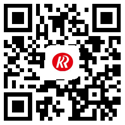ATE is the abbreviation of Automatic Test Equipment. It is a device for testing devices, boards and subsystems through computer control. Automate the test sequence by replacing manual labor with computer programming.
ATE began in Fairchild in the early 1960s. Fairchild produced gate devices (such as 14-pin dual in-line NAND gate ICs) and simple analog integrated circuit devices (such as 6-pin dual in-line operational amplifiers). At that time, it was a big problem for mass production testing of devices. Fairchild has developed computer-controlled test equipment such as the 5000C for simple analog device testing and the Sentry 200 for simple gate device testing. Both machines are controlled by the computer FST2 developed by Fairchild. FST2 is a simple 24-bit, 10MHz computer.
In the early 1970s, device development transitioned from small-scale integrated circuits to medium-sized integrated circuits, and from large-scale integrated circuits to very large-scale integrated circuits in the early 1980s. For device manufacturers, computer-controlled test systems have become the primary test equipment. Fairchild developed the Sentry 400, Sentry 600, Sentry 7, and Sentry 8 test systems for digital device testing.
In the mid-1980s, gate array devices were successfully developed, requiring 256 pins for testing and speeds above 40 MHz. In response to this demand, Fairchild tried to develop Sentry 50, but failed. Fairchild sold its ATE division to Schlumberger and became Schlumberger Test Systems. After Fairchild sold the test system to Schlumberger, many experts left Fairchild to join Genrad to form Genrad West Coast Systems. The GR16 and GR18 digital test systems were born here. These new test systems have independent test resources for each pin and have up to 144 pins. Soon these engineers left Ganrad to set up the Trillium test system and sold it to LTX. These engineers then left LTX, some of them joined Credence, and others joined other ATE companies. During the same period, Teradyne's automated test equipment dominated analog and memory testing.
ATE began in Fairchild in the early 1960s. Fairchild produced gate devices (such as 14-pin dual in-line NAND gate ICs) and simple analog integrated circuit devices (such as 6-pin dual in-line operational amplifiers). At that time, it was a big problem for mass production testing of devices. Fairchild has developed computer-controlled test equipment such as the 5000C for simple analog device testing and the Sentry 200 for simple gate device testing. Both machines are controlled by the computer FST2 developed by Fairchild. FST2 is a simple 24-bit, 10MHz computer.
In the early 1970s, device development transitioned from small-scale integrated circuits to medium-sized integrated circuits, and from large-scale integrated circuits to very large-scale integrated circuits in the early 1980s. For device manufacturers, computer-controlled test systems have become the primary test equipment. Fairchild developed the Sentry 400, Sentry 600, Sentry 7, and Sentry 8 test systems for digital device testing.
In the mid-1980s, gate array devices were successfully developed, requiring 256 pins for testing and speeds above 40 MHz. In response to this demand, Fairchild tried to develop Sentry 50, but failed. Fairchild sold its ATE division to Schlumberger and became Schlumberger Test Systems. After Fairchild sold the test system to Schlumberger, many experts left Fairchild to join Genrad to form Genrad West Coast Systems. The GR16 and GR18 digital test systems were born here. These new test systems have independent test resources for each pin and have up to 144 pins. Soon these engineers left Ganrad to set up the Trillium test system and sold it to LTX. These engineers then left LTX, some of them joined Credence, and others joined other ATE companies. During the same period, Teradyne's automated test equipment dominated analog and memory testing.


 中文
中文 English
English
